Ms Devika Chugh, Counselor & Special Educator at SUNRISE LEARNING
BEd (Special Education in ASD), MA Psychology, English Honors
(Blog compilation by Ms Anvi Mahajan)
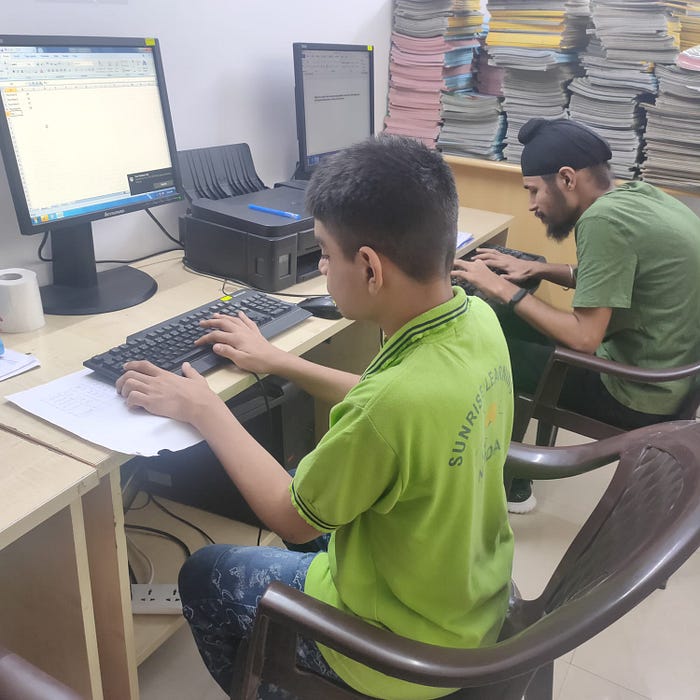
Puberty is the period where an adolescent’s body begins to change and develop in the process of maturing into an adult. As for all adolescents, it is a challenging period for children on the spectrum as their bodies go through various physical, hormonal and emotional changes that cannot be controlled or predicted. These changes can often be overwhelming for the child and may cause frustration or meltdowns. But we can work through these challenges with the correct preparation!
Before the child, the parents must prepare themselves for the drastic and unpredictable changes that adolescence may bring. Patience and acceptance of the upcoming changes can give you the power to act, respond and transform to manage new challenges.
What are the possible challenges that adolescence may bring ?
- Faced with a multitude of changes, adolescents may face challenges like:
- Control battles and temper tantrums
- Meltdowns, frustration, irritation
- Aggressive/ violent behaviours
- Non-compliance and non-acceptance of authority
- Feeling easily annoyed
- Socially unacceptable behaviours
- Sexual changes and hormonal surging
- Inability to find similar social connections or friends
- A feeling of rejection, dependence or low self-esteem
These changes need not be caused by one reason alone. Many factors may be acting together which makes it important for us to act on all areas simultaneously.
How can we try to overcome these challenges?
1. Teach communication:
Oftentimes, if people are unable to understand what is being communicated, aggression may develop. It is crucial to choose a means of communication suitable for your child.
Communication boards, pictures, flashcards, typing, writing and using apps may be effective means of communication. Sometimes, a child may be generally good at verbal communication but may need different means to express feelings or emotions.
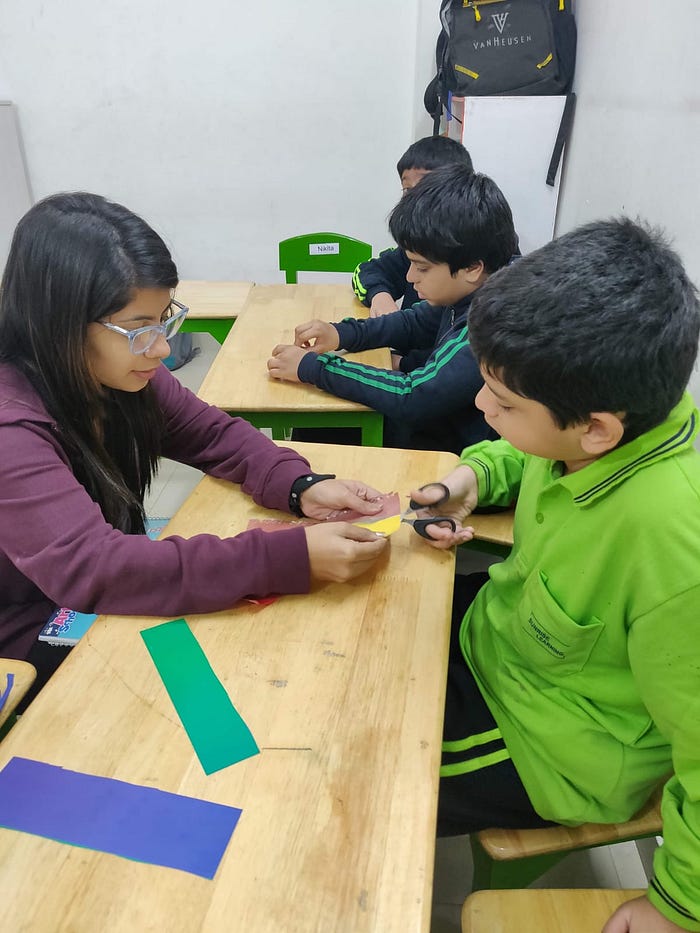
2. Creating structure
Creating a structure for the day and activities help reduce and manage anxiety. This becomes even more important during puberty when children are already going through unpredictable changes.
Physical structure- creating physical/visual boundaries which demarcate where each area begins and ends while minimizing auditory and visual distractions. For example, creating a tabletop study carrel to help complete tasks independently and distraction-free.
Structure of time- Schedules- a visual schedule that lists down activities for the day and helps children know where and when they should be present for a particular activity, reduces unpredictability. One should also be prepared to factor in changes and improvise within the schedule in case of any unforeseen changes occur, like if you are unable to continue or begin an activity.
Structure of activities & tasks- Work system- a visual/written representation of the tasks in an activity. These can describe the task to be performed, the number of steps to be completed, how the student can know the task is finished (a stop sign or ‘the end’ phrase) and what the student should do upon task completion (next activity or task)
Visual supports & Strategies- To teach new or challenging activities, visual representations of the task (illustrations, checklists etc.) may be used or by modelling the behaviour.
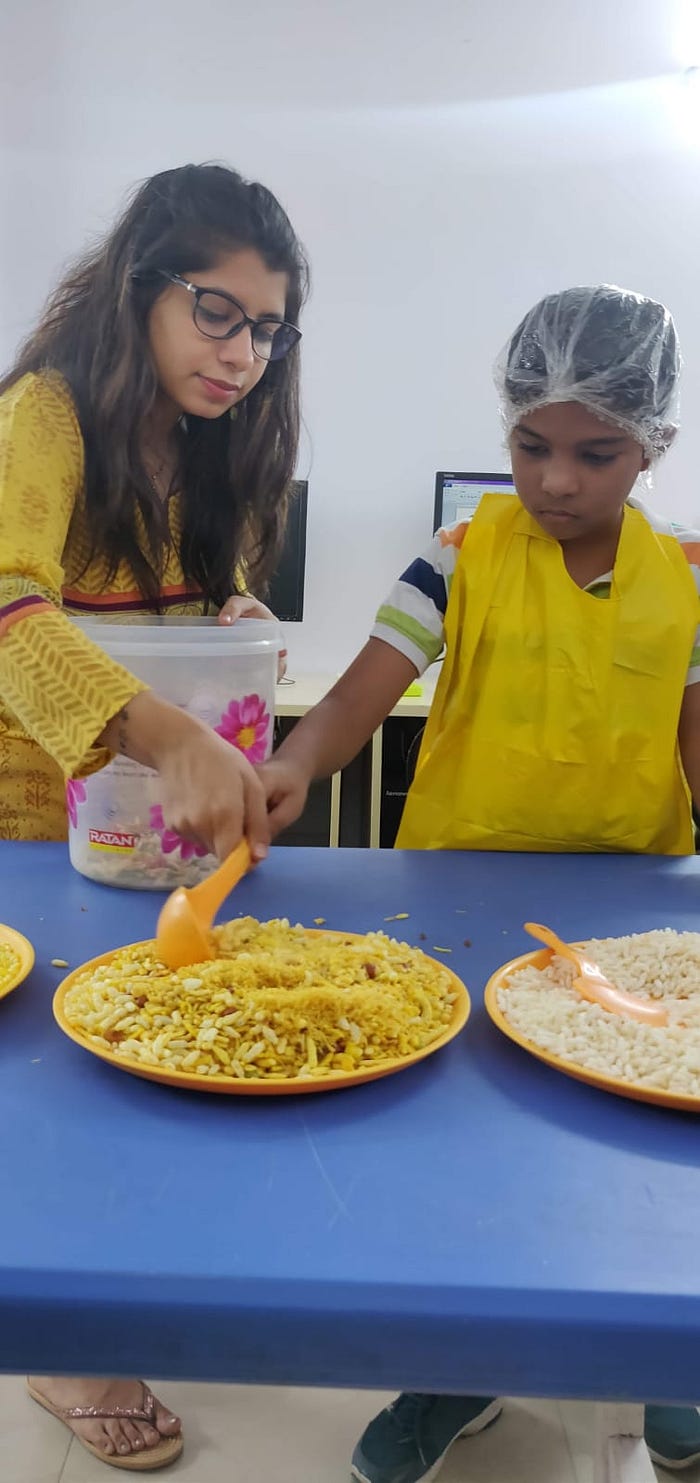
3. Working on skill deficits
Skills like ADL (activities of daily life), communication, regulation (sensory, physical, emotional) and
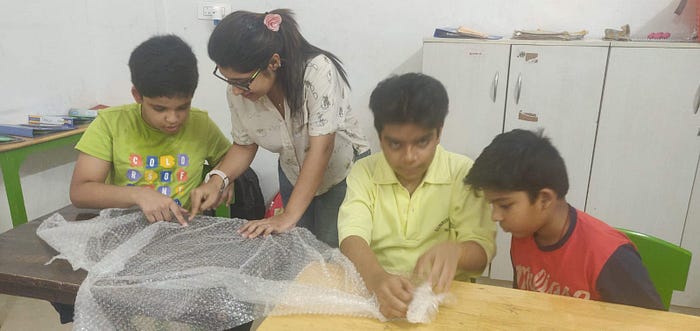
Leisure skills- skills around the student’s interests (drawing, singing, dancing etc.) or by developing routines and repetitive activities, depending on individual skill levels.
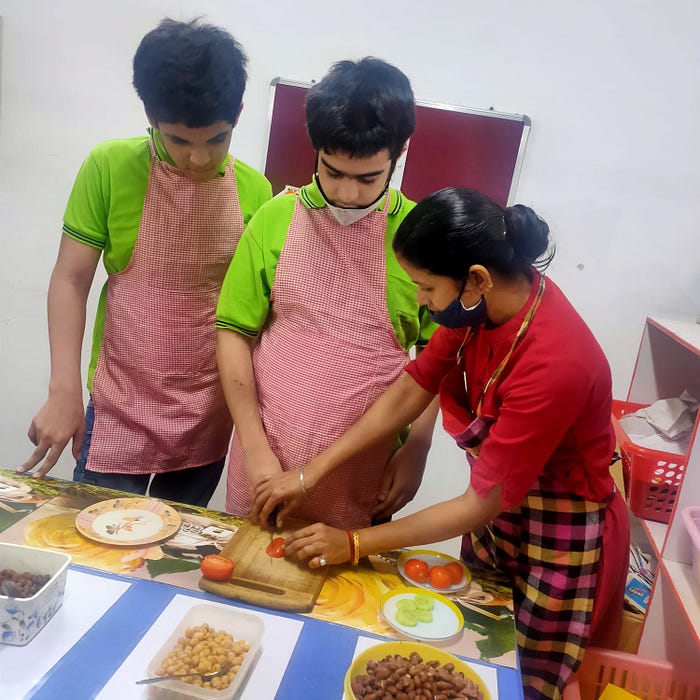
Social skills- Help learn how to act, behave and talk in social settings.
Skill-building can be done through:
Imitation– Performing the activity yourself which can be imitated by the student
Prompting- verbal or physical prompts or gestures to help complete activities
We do activities- Accompanying the student in performing activities, while being equally involved and invested. This gives a sense of enjoyment and security to the student.
Modelling– Modelling the correct behaviours for the student to watch and learn.
Video modelling- capturing videos of the student performing the activity and later using it to help understand what behaviours can be changed, using a positive and encouraging tone.
Role Play– enacting situations or better understanding and registration
Chaining– Breaking down an activity into smaller parts. Example- To teach how to dress oneself, you can first teach unbuttoning and then progress to subsequent steps.
Learning by seeing or doing– Some students are visual learners whereas some learn better by performing and experiencing activities.
Scripting– Preparing small scripts to help communication in particular situations. These can be practised with different family members to help with the generalisation of the behaviour.
Social stories- Practising and sharing social stories to aid skill development.
4. Respecting demands for independence and privacy
Skill-building- Students can tend to themselves and perform some activities on their own.
Choices- Helps children feel capable and independent enough to choose their activities. Example- choosing which task to perform, what to eat or wear etc., depending on individual skill levels.
Responsibility- Giving opportunities to complete small tasks independently. Praising upon completion of the responsibility helps enhance self-esteem and independence.
Alone time, space and- If feasible, allocating some alone time is essential. The student can be left free to do anything or can be given a few options of activities to be performed independently.
5. Teach Self-Regulation : The key skill that needs to be taught to a child is to help him/her identify & recognize his/her feelings & emotions, label them and “know” how to deal with them. Most children on the spectrum have muted interoception, and have difficulties in recognizing their own emotional state of mind/ feelings, and so their lack of awareness about their own selves makes it all the more difficult for them to understand how to deal with it.
Feelings are extremely vague and abstract, and imagination is the struggle. So feelings & emotional states can be taught to them by making them more concrete, and clubbing them into 4 color zones (A concept given by LEAH KUYPERS).
6. Sensory Friendly environment: While giving tasks & responsibilities, we must also avoid sensory overload. One must assess the situation and modify and adapt either the environment (reducing noises, lights, overwhelming smells, modifying food options etc.) or the child’s system (by providing earphones, sunglasses, comfortable clothing etc.)
– Busy/fidget box- Activities or tasks which help keep the student engaged and busy, avoiding indulgence in negative behaviours like sorting activities, music, dance etc.
– Frequent breaks- Short 5–10 minute breaks that help the student calm down by allocating activities like a music break, movement break (like walking) or a quiet room to avoid feeling overwhelmed.
– Prepare and preview- Keep in and long term and short term challenges and prepare to handle and overcome meltdowns, aggression and different situations.
– Proper sensory diet- An occupational therapist can help identify and assess the sensory needs of a child and help us prepare and provide for those needs.
Often violent or aggressive behaviours arise because they are unable to regulate themselves. These injurious behaviours may result in strong chemical stimulation where the child may also seek strong proprioception (hand biting, arm biting). Vice versa may also be true where a surge in stress chemicals may cause aggressive behaviours where the child can seek proprioception.
How can we deal with this?
The first step is to identify situations that trigger meltdowns and attempt to reduce them by eliminating, modifying, accommodating and training. Example- Performance anxiety about new tasks can be stressful. This can be managed by following up on a new task in the end, after completion of a familiar activity. Selecting the correct degree of difficulty of the new activity and performing it for a short period are helpful pointers to remember.
We must try to identify the function of the student’s behaviour and assess whether it is a means of communicating something and based on this, train the student for the appropriate behaviours.
We can also try:
- Desensitisation- Gradually desensitising the child to a challenging activity in small incremental steps.
- Hand over hand technique can be used to improve motor memory.
- Visual cues and verbal reminders can be used to inculcate correct behaviours.
Sexual and hormonal challenges in puberty
- Girls typically go through physical changes during puberty around the age of 7–14 years, whereas, boys go through these changes at around 12–13 years of age. But it is important to remember that these changes may be preponed or postponed for children on the spectrum.
- These changes are harder for children on the spectrum because their bodies are undergoing various physical, emotional, biological and hormonal changes which they cannot control! These added unpredictable changes can overwhelm them, presenting new challenges.
This process can be made a little easier by preparing the children. How can you do that?
- Educating them about their body and upcoming bodily changes through visuals, videos and social stories etc.
- Teaching independent hygiene and self-care- Employing task analysis and breaking down tasks to teach bathing, grooming etc.
- One should also prepare for challenges and alternatives, in case the student is unable to learn a particular behaviour. You must keep going forward!
- Sexuality
- – Self-stimulatory behaviours like masturbation are completely normal and occur due to the interaction between sexual organs, the brain and hormones. We need to normalize these behaviours and not shame them or be ashamed of the same. Parents must accept that everyone with a body will develop sexuality, the only problem is that children do not know how to express these feelings within acceptable boundaries. These expressions vary from simply looking or smiling to touching, forcing others to touch them, self-stimulatory behaviours etc.
- – The need is to practice social theory and use visuals to explain that these behaviours should only occur at certain times, in their room, in their private spaces only. Do not shame these behaviours and act aggressively/ferociously. Instead, teach the child the acceptable circumstances under which these behaviours should occur, while also keeping tabs on these expressions.
- – If these expressions are curbed, then there may be more negative manifestations. One should create a safe space for expression while setting boundaries and redirecting them to the right behaviours.
- – These behaviours can be reinforced through teaching, role play, modelling/video modelling and practice where the child is shown and taught that certain behaviours must only take place in their private spaces, alone.
- – It is equally important to provide other outlets like physical exercise, sports etc. to channelize their sexual energy in other forms.
Concept of private and public
- Teaching which places are private spaces, like their bedroom/bathroom.
- Which people are they safe with and can indulge in private acts with
- We must attempt to reduce the involvement of the opposite sex parent to avoid initiation from the child’s end.
- Teaching what private body parts and activities are
- The concept of permission and personal space: Personal space of oneself and others should not be violated.
- This is an example of a picture card that can be used to teach students about which people can be approached and considered close and about degrees of intimacy.
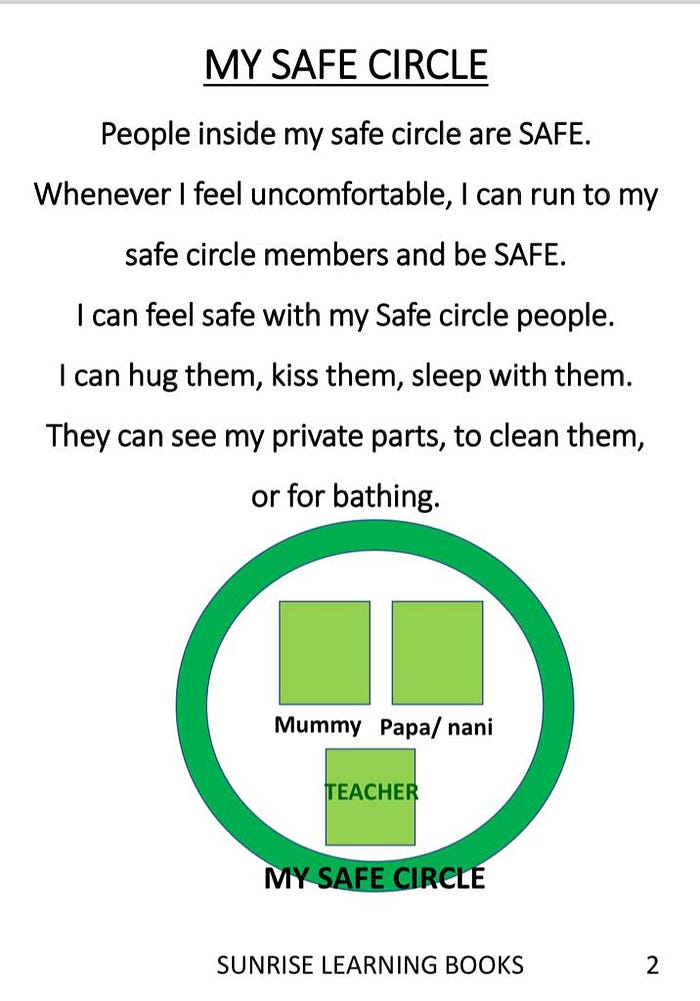
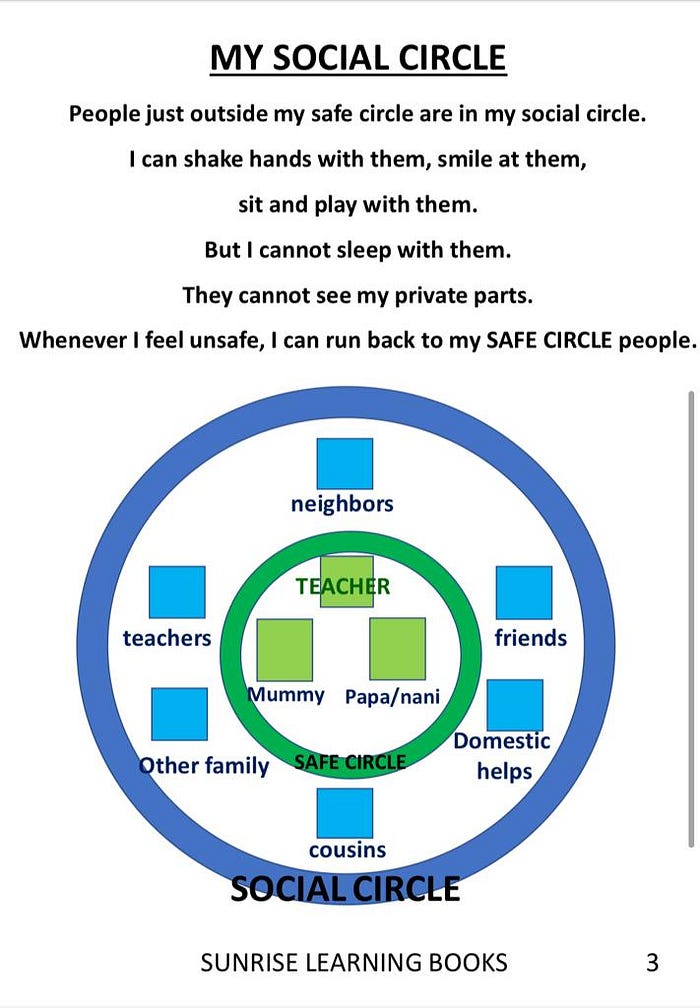
- Just like other behaviours, sexual behaviours change and usually fade away with time.
- One should mindfully intervene and not get overwhelmed as these changes are normal.
What can you do?
- -Teaching children about body parts, their different slang and words through visuals and models can help children understand their body and their private parts. They should also be taught about differences between male and female bodies from an early age, at as early as 3–5 years of age.
- – Developing sensory-friendly environments
- -Building self-esteem:
- By encouraging independent activities like hobbies, sports, academics or recreational activities
- Compliments and positive reinforcement
- Giving routines that can be followed independently (eg: eating and then clearing and rinsing the dishes)
- Giving choices and their own space- Letting children make choices independently and giving them their own space to learn how to be alone without harming themselves or others.
- Providing opportunities to succeed- choosing situations with low unpredictability while lowering your demands. Performing familiar activities, which are simple and predictable, help the child feel competent.
How can you handle anger and frustration?
- Parents should avoid getting involved in power struggles and reason with the child only when the child is calm and composed. Coping skills and strategies to vent anger can be taught by practice and role play. For example, punching a pillow, breathing 5 times or counting to 100 to feel relaxed.
How to manage a meltdown?
- Children may experience a meltdown due to emotional triggers, sensory hyperactivity, and physical overload among other reasons. They may act out and engage in screaming, biting and other destructive behaviours. In this period, the parent(s) should move away, not make eye contact and pay no attention to this behaviour. In case the behaviour is highly injurious, one should hold the child from their back and direct them to a calming zone.
- You must model what you seek- remain calm and composed when handling a meltdown!
Emotional Regulation
- Acknowledging and validating their emotions helps the child feel safe, secure and competent.
- – Gauge and asses if the child is feeling overwhelmed. Intervene early.
- – Stop the activity and practice a familiar calming routine or coping strategy.
- – Model the behaviour and routine and accompany the child in it.
- – Hold hands and give pressure if sought to give a sense of security and assurance.
- – Reinforce cooperation and if this does not work, step away and let the child work their way through their feelings while ensuring their and your safety. Be present.
- – Validate their emotions of anger or frustration but not the behaviour and mode of expression.
- – Remember to always return to the activity! It is imperative so that we do not give the impression that this is an escape mechanism. Children should know that it is okay to pause and take a break when feeling stressed or overwhelmed.
Expression of feelings
- Parents should help children recognize and label what they are feeling. They should help them understand how to express these feelings. For example, if they’re feeling happy they can express it by pointing to a flashcard, by telling their parents, typing etc.
- Modelling and role-playing scenarios and situations
- Relationship and intimacy boundaries- Setting boundaries about which behaviours they can engage in, with which people. Example- teaching them who they can hug or touch when happy and whom they must not.
- Adolescence is a tumultuous period for all, not just for children on the spectrum. Preparing the child and the parents can brace them, making them more able to deal with these rapid changes. However, these challenges can never be completely eliminated. We must prepare, act and transform to tide over the challenges puberty presents before us.
Adolescence is a tricky & a challenging time that each child should be able to go through with understanding & peace, and should be able to enjoy the growing up phase. We should empower ourselves as parents, to be able to be the CALM in their STORM !
Additional reading:
WELCOME TO AUTISM LAND: Read the blog Welcome To Autism-Land (sunriselearning.in)
MANAGING MELTDOWNS: Read the blog MANAGING MELTDOWNS IN CHILDREN WITH AUTISM (sunriselearning.in)
[mc4wp_form id=”4687″]

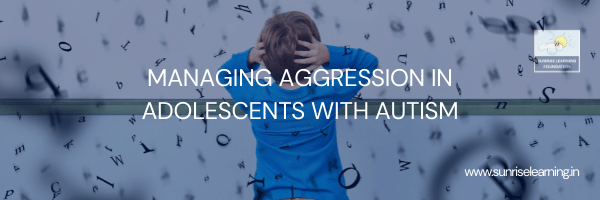
This is a very insightful and informative comment. Thank you to the author for sharing this information.